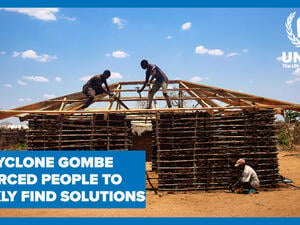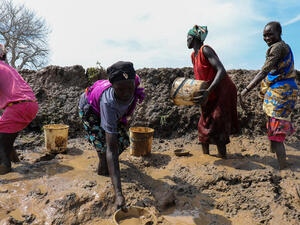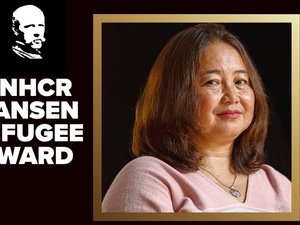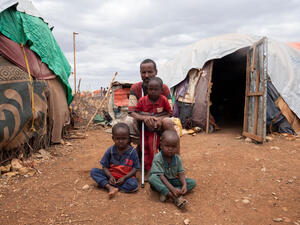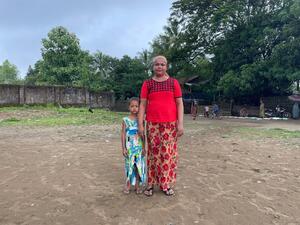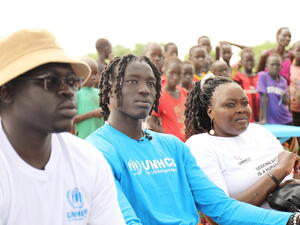Deadly fortnight in Mogadishu drives more Somalis to displacement
Deadly fortnight in Mogadishu drives more Somalis to displacement
UNHCR is alarmed by the further deterioration we are seeing in the situation in Somalia's capital, Mogadishu. Our partners report that fighting over the past two weeks between the transitional government and al-Shabaab has cost more than 230 civilian lives with at least 400 people wounded and 23,000 displaced. So far this year over 200,000 civilians are estimated to have fled their homes.
People who have been able to reach northern Somalia and neighbouring countries are mostly arriving on foot and by small busses and traveling without shelter. They tell our staff that the streets of Mogadishu are completely deserted and that people are too afraid to leave their houses. In these dangerous and difficult conditions aid distributions are becoming rare and those who venture out are risking their lives.
Making matters worse is that fleeing Mogadishu has itself become more dangerous and difficult. People are giving away their remaining possessions for a seat on a bus out of the city. As they leave Mogadishu they face new risks and difficulties en route to Somalia's Puntland in the north or Ethiopia and Kenya to the west and south.
With some 7,300 people having reached Yemen by boat this year the number of Somali arrivals has halved in comparison to the same period last year. Refugees say they have had to pass numerous checkpoints manned by armed groups in Somalia before reaching the towns and villages along Somalia's Gulf of Aden coast where they board smugglers' boats.
Meanwhile in Kenya, some 37,000 Somali refugees have arrived so far this year. This is down by roughly a third in comparison to the first eight months of 2009. However, in August we registered 6,500 new Somali refugees - the highest monthly total since June last year. Those who make it to the Kenyan border and register at the Dadaab refugee complex say that many people are staying in makeshift IDP camps in Somalia as they fear forced recruitment and abuse by militias operating in southern Somalia. In addition, there is no transport and, when there is, many cannot afford the trip to the border. In many areas heavy rains have also made roads impassable.
Ethiopia is the only country in the region showing a continuing increase in the rate of Somali arrivals. More than 20,000 Somalis have sought safety and shelter there this year, bringing the total Somali refugee population to almost 76,000. Most have either family or clan links in this neighbouring country.
Overall, almost 68,000 Somalis have fled this year to countries in the region. After Afghanistan and Iraq, Somalia generates the largest number of refugees in the world. As of the end of August, there were more than 614,000 Somali refugees and over 1.4 million displaced within the country. The collapse of the state, spiraling violence and anarchy, compounded by poverty, has led to one of the worst humanitarian crises in the world and unacceptable suffering of the civilian population.


